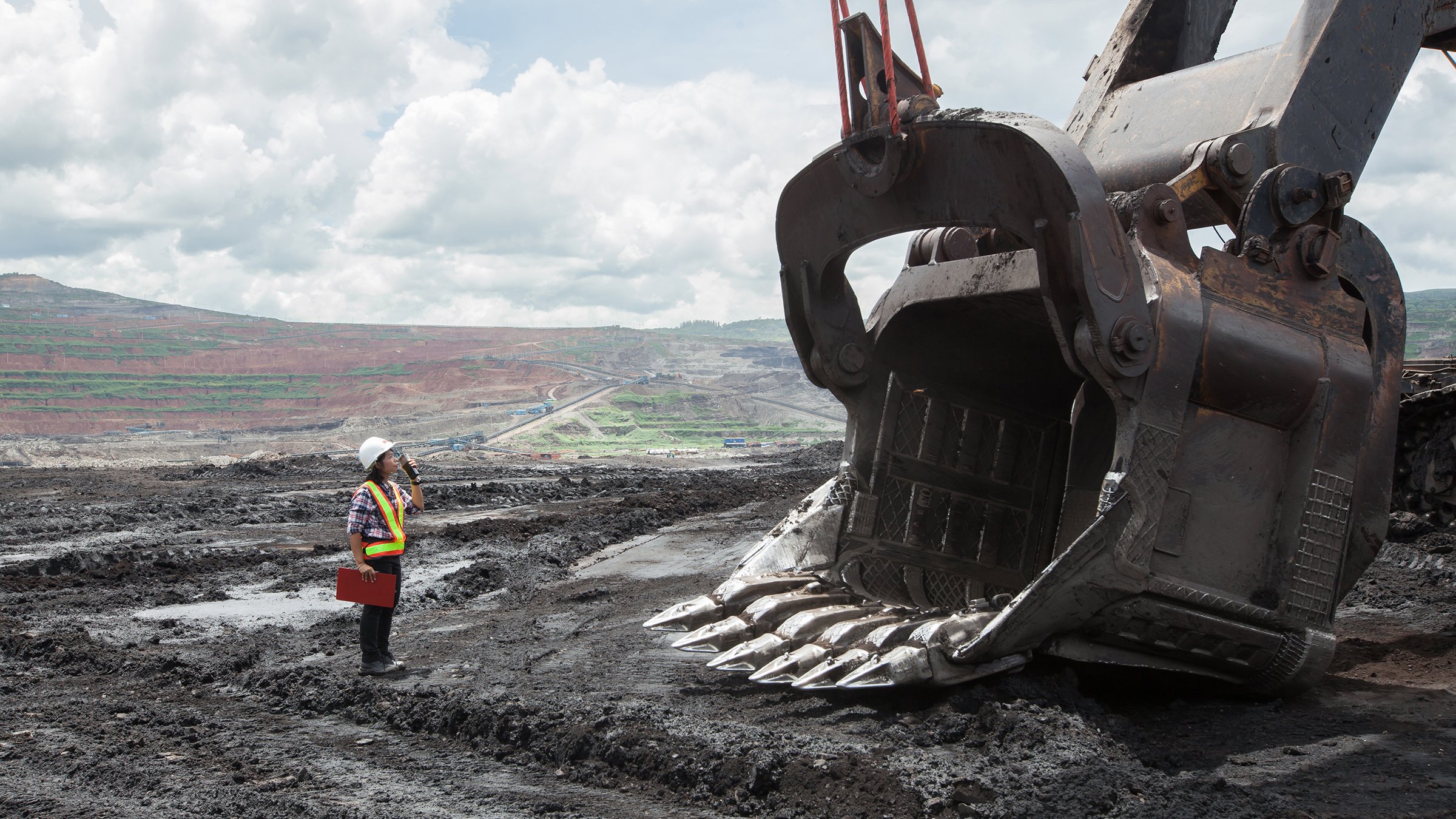Challenge
To produce a ranked list of high impact energy saving improvement options for surface coal mining operations.
Solutions
A stochastic process simulation model of the truck-and-shovel overburden removal operation was built in Arena. The chi-squared goodness-of-fit test was used to fit theoretical distributions to the cycle time and payload data. These distributions were then used to describe stochastic processes in the Arena model. The model was validated with truck fuel consumptions.
Results
Data from Mine 1 shows that the average load factor of the shovel engine is 66.78%, which corresponds to a fuel consumption rate of 35.36 gals/hr and fuel efficiency of 39.29 tons/gal (of diesel). The average truck fuel consumption is 3.68 gals/cycle. This leads to a fuel efficiency of 37.14 tons/gal. Overall, the fuel efficiency of the truck-and shovel overburden removal operation is 19.09 tons/gal.
Background
The US mining industry consumes approximately 365 billion kWh of energy annually to produce vital products supporting the US and world economies. Of this figure, coal mining accounts for approximately 142 billion kWh per year. The US Department of Energy (DOE) estimates that energy consumption can be reduced by 24.6 billion kWh/year using currently available best practices and a further 44.8 billion kWh/year with more research, making coal mining much more efficient (DOE, 2007). This translates into an almost 49% decrease in energy consumption or nearly $3.7 billion of potential savings on coal production costs at 5.3¢/kWh of energy. With climate change legislation on the horizon, the benefits of energy savings in any production endeavor will be compounded. The most promising processes for energy efficiency improvements are grinding and materials handling, including loading and hauling (DOE, 2007).
Almost all current energy-saving strategies in coal mining involve improvements in technology (e.g. improving engine performance) and overall energy audits and reporting to ensure increased energy efficiency. Research, however, shows that operator practices and mine operating conditions significantly affect energy consumption. Simulation experiments conducted by the research team on electric shovels, for instance, suggest that an operator who operates near optimal with a 58 yd3 bucket can save over $114,000/year in electricity costs for the digging cycle alone, when compared to an average operator (Awuah-Offei and Frimpong, 2007; Awuah-Offei, 2009). Other research shows that equipment utilization is a key factor in the energy efficiency of mining operations. Consequently, this research explored operating conditions and operator practices to optimize energy savings with existing equipment.
Challenge
The overall goal of this project was to evaluate a variety of operational strategies and produce a ranked list of high impact energy saving improvement options for surface coal mining operations. The research team conducted energy audits of truck-and-shovel overburden removal and highwall miner operations. This information was used to develop regression models describing truck and shovel energy consumption. The research team then built a stochastic simulation model of the truck-and-shovel overburden removal operation and used it to assess a variety of improvement measures by simulation experimentation.
Solution
The overall goal of this project was to evaluate a variety of operational strategies and produce a ranked list of high impact energy saving improvement options for surface coal mining operations. The research team conducted energy audits of truck-and-shovel overburden removal and highwall miner operations. This information was used to develop regression models describing truck and shovel energy consumption. The research team then built a stochastic simulation model of the truck-and-shovel overburden removal operation and used it to assess a variety of improvement measures by simulation experimentation.
Results
Results of energy audits show that the average fuel efficiency for trucks, shovels, and the overall truck-and-shovel system are 37.14, 39.29, and 19.09 tons/gal of diesel, respectively, for overburden removal at the study site. The highwall miner‟s energy efficiency is 0.443 tons/kWh. Valid fuel consumption models for shovel loading and truck haulage have been formulated based on these energy audit results. Valid stochastic process models of truck-and-shovel operations have been formulated to study fuel consumption.
The following strategies, in decreasing order of impact, provide the most energy savings for truck-and-shovel overburden removal at the mine: (1) shorten haul roads; (2) increase shovel capacity; and (3) increase shovel utilization through optimal truck matching. Additional data will be required to adequately describe operator effects on fuel consumption. There are indications that power quality affects the energy draw for highwall miner operations but further study is required to adequately understand this.
已發佈 2014年7月31日
Ready to Order Your Software?
Recommended For You
